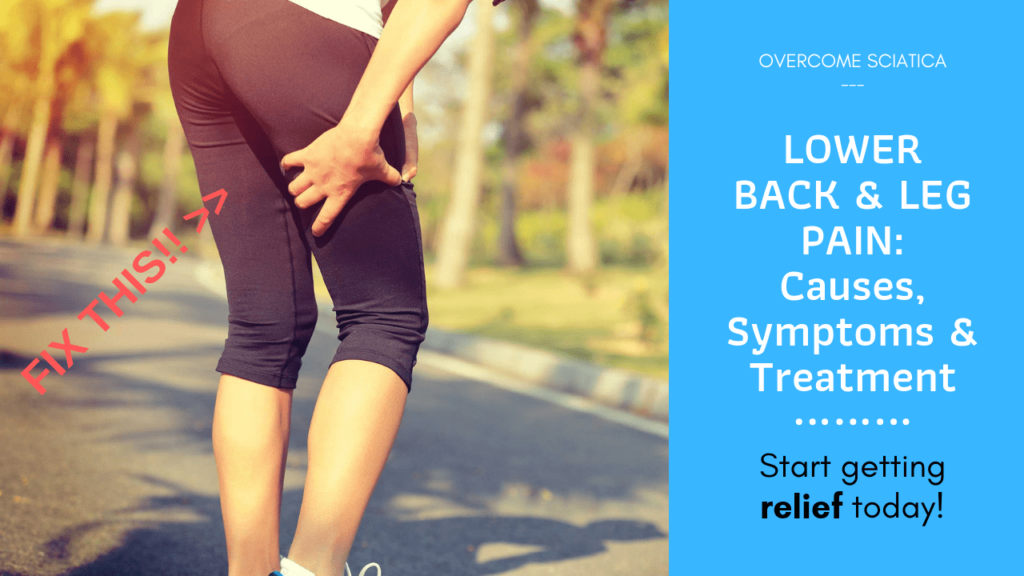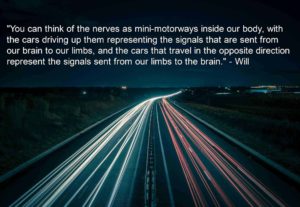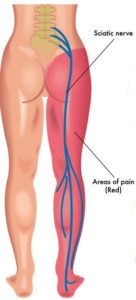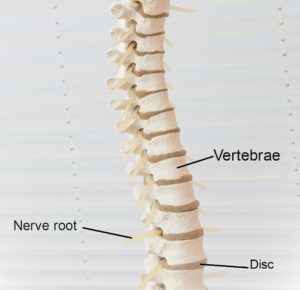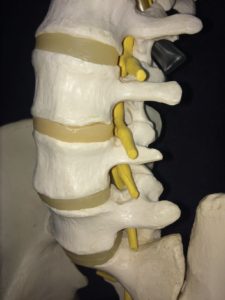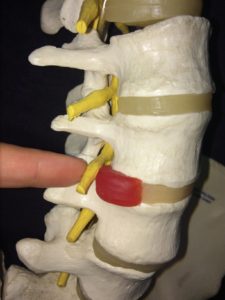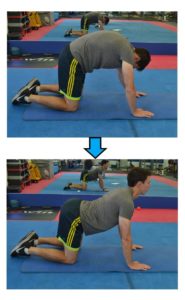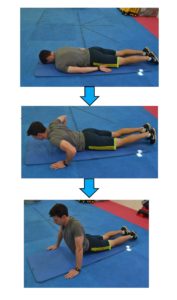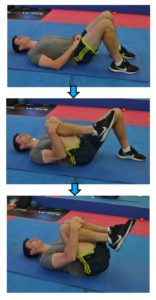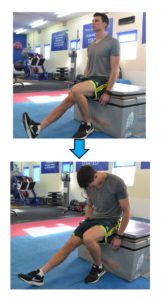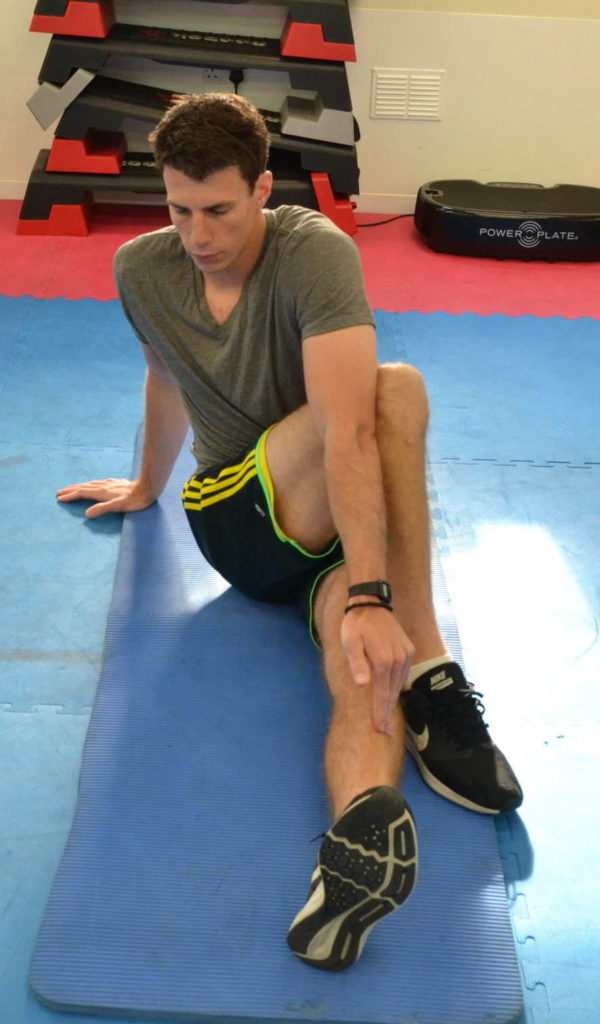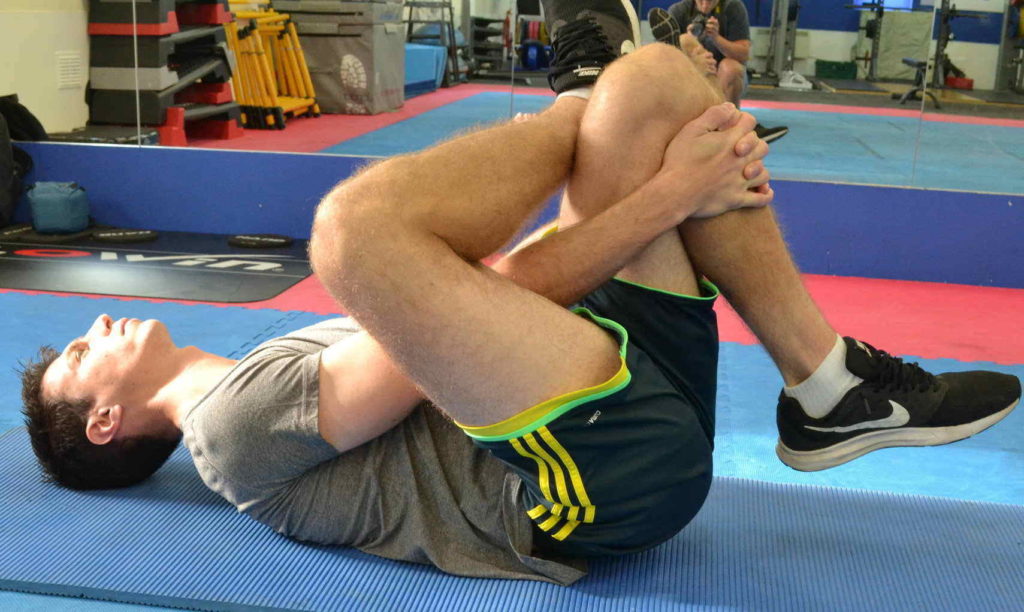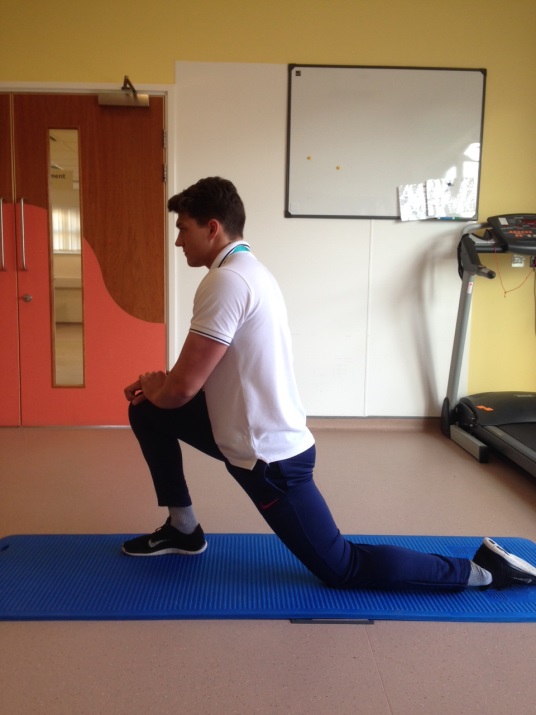Lower back and leg pain can be both confusing and downright terrifying! Often, people who suffer from lower back and leg pain don’t know whether the two painful areas are linked or whether they are two separate problems entirely. We are here to help – today, we talk about lower back and leg pain symptoms, their causes and attempt to point you in the right direction to getting these irritating problems sorted.
Aims of this post:
- To provide an in-depth comprehensive guide to lower back and leg pain symptoms
- To discuss how lower back and leg pain symptoms occur, and where to go after a diagnosis
- To explain when you need to seek out immediate medical attention based on your symptoms
- To point you in the right direction for how to get the problem sorted!
The Ultimate Guide to Lower Back & Leg Pain Symptoms
When suffering from lower back and leg pain, it’s likely you’ve already Google’d around a bit before finding this website (don’t worry – you’re in the right place now!)
You may have read about a condition called ‘SCIATICA‘. Let’s talk about sciatica first, then explain how this condition can cause lower back and leg pain.
Before we dive in, please be aware that we are part of the Amazon Affiliate programme. This page may contain Amazon affiliate links, so if you choose to purchase a product for your sciatica that we recommend through a link on this page, we will receive a small commission at no extra cost to you. This helps us keep Overcome Sciatica alive! Thank you for your support. Please be assured that we only ever recommend products that we truly believe can help.
What is Sciatica?
The term “sciatica” actually means one very simple thing – pain in the leg related to a nerve. Strictly speaking, “sciatica” refers to pain from the sciatic nerve, which includes the pain down the back of your leg that can travel all the way to your toes.
Sciatica is not a “disease” in and of itself. “Sciatica” simply describes a set of symptoms (we’ll get to those later).
There are many potential causes for sciatica symptoms. A large number of these causes are due to a problem within the lower back. However, the location of the problem can also be the hip, or even further down the leg.
Without doubt, the lower back (or the “lumbar spine” if speaking to a medical professional) is the area that causes the most cases of sciatica. Let’s now learn how the lower back is responsible for most sciatica symptoms…
The Lower Back
The lower back is made up of 5 bony segments, called vertebrae, all stacked upon one another. Between these vertebrae are the intervertebral discs; tough sacs made up of strong fibres called “collagen”, combined with water and nutrients.
These discs are responsible for shock absorption through the spine, as well as lubrication of movement.
The joints that join these bony vertebral segments together are called “facet joints“. They allow the vertebrae above to move with the vertebrae below, with the assistance of a lubricating substance called “cartilage”.You’ve probably heard of cartilage before – it is the substance that keeps all the joints in your body healthy and mobile.
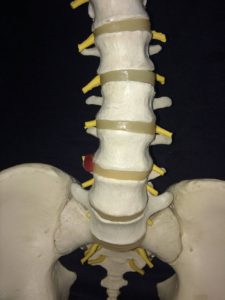
There are 24 vertebral bones in the spine, with 5 of them making up the lower back. In the centre of the vertebral bones within the lower back, runs the spinal cord.
When this reaches the bottom of the spine, it splits off into a network of nerves (called the “cauda equina” after the Latin term for a “horse’s tail” which refers to its appearance). You can see a really useful picture of the cauda equina HERE.
These nerves then leave the spine at each of the 5 lowest levels in the back, initially via a nerve root which then becomes a fully functional nerve.
This functional nerve then runs into the leg, supplying the skin with sensation and our muscles with the signals that allow them to work.
How Do Nerves Work?
To understand how lower back and leg pain symptoms occur, we must first understand how these nerves work.
The easiest way to get our heads around this is to imagine nerves as long cords in the body, that start in the spinal cord (which runs from the brain to the tail), and leave the spine through small gaps between the vertebrae.
Nerves send signals up to the brain from our body about touch, sensation and pain. Equally, the brain sends instructions down the nerves to our muscles, to make them move so we can walk, talk and eat.
You can think of the nerves as mini-motorways inside our body. On these motorways, the cars travelling down represent the signals that are sent from our brain to our limbs, and the cars that travel in the opposite direction represent the signals sent from our limbs to the brain.
When we have a healthy nerve, the signals travel smoothly, within the “speed limit”, and without running into any traffic.
Lower back and leg pain often occurs when the transmission of these important signals is affected.
We will go further into detail on the topic of what specific problems can actually cause sciatica later in this post.
But for now, let’s talk about the lower back and leg pain symptoms that someone with sciatica may experience.
Are You Looking for RAPID Relief from Sciatica?
My good friend, colleague and fellow international sciatica expert, Dean Volk, has a brand new sciatica relief video course available – and I’m delighted to be an official sponsor!
Check out Dean Volk’s “Kicking Sciatica OUT of the Butt!” Online Pain Relief Course Here!
I can proudly recommend Dean and his course for sciatica sufferers – because I’ve seen his incredible results first-hand. You can check out his course (and get lifetime access to the videos and bonus content) by clicking HERE.
Lower Back and Leg Pain Symptoms
This section will go over the well-known symptoms of this condition (known as sciatica), as well as uncovering some of the lesser known sciatica symptoms, too.
- Pain in the leg: This is one of the classic sciatica symptoms. The pain that you feel follows the course of the affected nerve in your leg. If the sciatic nerve is affected, you feel pain down the back of the leg, sometimes all the way to your toes. This is because that is the path that the sciatic nerve takes.The classic sciatic pain we see starts from the back or buttock and runs all the way down the back of the leg in a shooting line. It is also possible for the pain to be felt in one area of the leg only. Often this is the case in the calf. The pain can be described as sharp and shooting, “like an electric shock”, but it is also possible for this lower back and leg pain to be felt as a dull throbbing ache, too. If it is not the sciatic nerve, but a different nerve, that is affected: the pain can run down the side of the leg, or down the front of the leg. It can also run into the groin, too.
- Pins and needles or numbness in the legs or feet: This symptom is very common in people who suffer from lower back and leg pain, and is caused by the same thing that causes the leg pain. Often, the pins and needles or numbness will affect the same areas in the legs as the pain does. These sensory changes can range from a tingle, “fizzing”, or slightly “dull” feeling, to complete loss of sensation, depending on severity.
- Loss of strength in a muscle group in the legs: When the affected nerve gets compressed to a point that the signals within that nerve cannot be carried effectively to the muscles any more, loss of strength occurs. This can be quite a serious symptom, and if you feel this may be happening to you it is advisable to get a check-up from a doctor as soon as you can.
- Back pain: Lower back pain very often accompanies leg pain. This is because, usually, the problem that causes sciatica symptoms is actually within that person’s lower back.Two quick but important facts:
1) It is entirely possible to have the other sciatica symptoms without any back pain.
2) Not all causes of back pain also cause leg pain.
So why would someone get these lower back and leg pain symptoms?
This part will hopefully answer all the “why” questions you might have about the symptoms you’re experiencing. Like we spoke about earlier, having a full understanding of why something happens helps us understand how best to treat it.
So, first a recap of our anatomy, then an explanation of why you’re suffering from lower back and leg pain. Let’s dive in!
As we can see in the picture, our spines are very complex. We have 7 cervical vertebrae (bones in the neck), 12 thoracic vertebrae (bones in the mid-back), 5 lumbar vertebrae (bones in the lower back) plus 1 sacrum (tail bone).
Between each one of these vertebrae are the intervertebral discs, that we spoke about before. Each disc has a soft inner section – called the nucleus – and a tough outer section called the annulus.
The spinal cord runs through the vertebrae, protected by the strong bones, discs and ligaments that hold the spine together.
Branching off from the spinal cord we have nerve roots (seen clearly in the picture below) that leave the spine and re-converge to become the main nerves in the body. The main nerves within the legs all begin in the part of the spinal cord that sits in the lumbar spine (lower back).
You can see in the picture the nerve roots of the lower 4 vertebrae. The nerve roots are in yellow. The bottom 2 nerve roots (plus 3 from the sacral region lower down) will converge to make up the sciatic nerve.
The sciatic nerve is the largest nerve in the human body. It is roughly three-quarters of an inch across and runs all the way from the lower back to the toes, via the back of the leg.
Going back to the motorway analogy we used earlier, the sciatic nerve is like a huge motorway, with cars (signals) running up and down its length constantly.
So What Goes Wrong in Sciatica?
Something that has become obvious to the medical profession as a whole is this: nerves do not like to be touched!
Touching, pinching or compressing a nerve causes reactions around that area, causing pain along the entire course of the nerve.
You will get sciatica symptoms from the direct contact but also a chemical reaction around that area which exacerbates these symptoms.
The chemical reaction that occurs when we compress a nerve, especially when disc material touches the nerve, is similar to the type of reaction we get when we are stung by a bee.
Chemical irritants, like “substance P” and “histamine” remain for some time in the affected area, causing further inflammation to the nerve root and pain along the course of the nerve.
Not a happy combination!
So, generally speaking, lower back and leg pain symptoms are caused by something touching, pinching or compressing the affected nerve.
This usually happens in the lower back, as the lower back is where the nerve roots run through tight spaces. This leaves them vulnerable to being contacted if a structure in the back has invaded the space within which the nerve runs through.
So, what problems actually cause lower back and leg pain?
The structures in the back that can affect the nerves and cause lower back and leg pain are:
- The intervertebral discs: The tough outer part of the intervertebral discs can develop micro-tears over time through repetitive movements under load. These micro-tears can develop into “bulges”, which occur when pressure causes the inner material in the disc to push into these weakened zones. These bulges can encroach on the tight spaces that the nerve roots run through.In a worst case scenario, the inner material of the disc can actually leave the side of the disc through these weakened areas, causing a chemical reaction around the nerve root leading to lower back and leg pain (this is called a ‘disc herniation’). This often gets worse when a person bends forward, as pressure on the front of the disc causes the inner material to “bulge” backwards towards the nerve root, irritating it and causing sciatica symptoms.
In the above picture, you can see what it looks like when a disc bulges slightly. The red area represents the bulge, and this will press on the yellow nerve root, causing pain all along the course of the nerve.
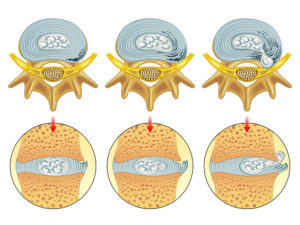
- General age-related changes to facet joints and discs: As we age, our discs dry out and lose height, the bone around our joints thickens, our joints become stiffer and we lose the cartilage that helps to lubricate movement in our spines.All of these changes equate to a smaller and less lubricated space for the nerve roots to exit the spine from, causing them to become compressed. When this compression becomes more severe, it leads to a condition called “spinal stenosis”.
- Piriformis syndrome: In some people, the sciatic nerve runs through a muscle in the buttock region called the Piriformis. When this muscle gets tight, the nerve can become compressed in the buttock, causing similar pain and numbness to the other types of sciatica.
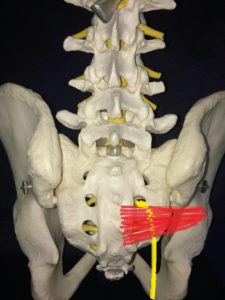
- Fractures: In rare cases, a fracture of one of the vertebrae can cause a compression on a nerve root. This can happen following trauma, like a fall, but if someone has a condition called “osteoporosis” then fractures can occur spontaneously. Osteoporosis is a condition that causes a thinning of the bones and is more common in women and the elderly.
- Tumour or growth: Very rarely, a cyst, tumour or other lesion can occur in the spine which then leads to a nerve root compression. This type of problem is luckily not very common. We will talk about “red flags” for tumours later in this post. If you’re really worried about this being a cause for your sciatica, please go and seek help from your doctor, who can hopefully put your mind at rest.
When Should You Be Worried?
This is a very important section of this post. For every patient that I assess with sciatica, it is imperative that I ask these questions prior to commencing any treatment, in an attempt to rule out any serious problems that may be causing their sciatica.
If you answer a “yes” to any one of the questions in this section, you should contact your doctor immediately.
These problems are thankfully very rare, but they do occur, and I have unfortunately had patients with these issues. It is important that you understand what to look out for, and that you know what to do if any of these signs or symptoms do arise in the future.
You can also check out my guide on How to Tell if You Need a Scan when you have sciatica.
Along with lower back and leg pain, the worrying symptoms we screen for include one or more of (not exhaustively):
– Altered sensation to the “saddle” area around your bottom and privates
Do you have any numbness in the area of your bottom that touches the seat when you sit down? Do you have any numbness when you wipe your bottom?
This symptom can occur when the nerves that supply the skin around this area of the body become compromised. It can indicate a nerve compression which requires immediate attention.
– Loss of control of bladder or bowel function. This includes both incontinence and retention (not being able to pee)
Do you have any problems with your bladder and bowel function? Do you try to pee but find it hard to start the flow? Have you had any “accidents” recently where you have gone without knowing?
Again, this can indicate a serious compression in the lowest nerves coming from the spine. These nerves control bladder and bowel function. If the compression is not relieved quickly, there are usually permanent consequences.
– Loss of strength in the legs
Do you feel like your knee, hip or ankle wants to give way when you walk? Do you feel like you are losing strength in your limbs?
A loss of strength in the legs occurs when the innermost fibres of the nerve are squashed. This prevents the signals from reaching their target muscle normally.
In cauda equine syndrome, you may also experience the pins and needles and numbness associated with routine sciatica. The symptoms are more likely to occur in both legs with cauda equina.
Cauda equina is a medical emergency and requires immediate investigation. It is best practice to contact your local emergency centre if you have any of these symptoms. Do this as quickly as you can as the quicker you act, the better the outcome is likely to be!
If you have any of the above symptoms, it is advisable to get an assessment with your doctor as soon as you can. Of course, the above symptoms can be caused by non-serious issues too, but it is always best to get checked out if you are in any doubt.
If you don’t have any of the above symptoms but are in severe pain which has not subsided over the past few weeks, I would recommend getting checked out anyway. If you have the necessary investigations and your doctor is happy for you to proceed, you can then come back to this website and continue to follow the advice within.
So there are the common causes of sciatica, and an explanation as to why each one of these causes leads to the pain we feel in the back and legs.
Now, let’s talk about what you should be doing at home to relieve lower back and leg pain and end the suffering!
Lower Back and Leg Pain: Treatment and Pain Relief
It is no secret that a huge part of my approach as a sciatica specialist is providing people with the right exercises for lower back and leg pain! If the exercises I give are appropriate, they can lead to truly significant sciatica leg pain relief.
However, it’s not always easy to choose the right exercises for lower back and leg pain.
In this article, I’ve picked some of my most effective exercises for relief of lower back and leg pain to show you today. You’ll find pictures of these exercises, as well as videos for each.
I’ve also included a handy guide for choosing which exercises are right for YOU, as well as a guide to the number of repetitions and sets you should be doing for each exercise below each picture.
Of course, not all of these exercises will be right for everyone and choosing the right exercises for lower back and leg pain is often a game of trial and error.
As always, I recommend to everyone that these exercises should be pain-free at all times. See my ‘Golden Rule’ by following this link: You can read about my Golden Rule by clicking here. If you find one of the following exercises painful, simply stop and choose another instead.
How to use this guide:
As everyone will have different requirements for their exercises for lower back and leg pain, no one should be doing all of the exercises on this page! If you did, you’d be there all day. The LAST thing someone with sciatica wants is to have to give up the things they enjoy in place of lower back and leg pain exercises. I don’t want that either!
Most people should spend no longer than 5-10 minutes per day on these exercises. This means picking just one or two but being consistent with them; day in, day out.
You’ll probably find that some of these exercises for lower back and leg pain are painful for you. These are the ones you should avoid. The best way to start is to read the descriptions and be guided by the “Who this is for” section of each exercise. Pick 1-3 to try for a period of about a week. Change any exercise that worsens your pain.
The best advice I can give you is to pay attention both during and in the hour immediately after the exercise. If you feel worse at either of those times, that exercise isn’t for you and you should change it.
First, it’s important to ask the question “Should I be doing sciatica exercises right now? Or would rest be better?”
I’ve answered this question in the video below:
So, once you’ve watched the video above, let’s have a look at some of my most effective sciatica exercises for pain relief:
The Best Exercises for Lower Back and Leg Pain Treatment
The exercises provided on this page for informational purposes only and are not designed to be a ‘prescription’ of any kind. Be sure to check with your healthcare provider before you begin any new exercise programme.
#1 – Happy Cat/Angry Cat
Instructions:
- Begin on all fours, supported by your hands and knees
- Start off by rounding your shoulders and tilting your head forward so as to look towards your knees
- Try to push your shoulder blades apart from each other as you round your shoulders further, hollowing your tummy out at the same time. You should feel your lower back round as your tummy gets further away from the floor.
- Now move in the opposite way. Arch your back as you lift your chin and bring your shoulder blades together again
- Alternate between these two positions for 30-seconds, being sure to make the transition between them as smooth as possible.
- Repeat this exercise 2-3 times per day
Who this exercise is for:
This exercise will be useful for most people with lower back and leg pain, so long as they can get onto the floor safely. You must only persist with this exercise if it doesn’t cause your lower back and leg pain to worsen.
Why this exercise for lower back and leg pain works:
This exercise is a way of doing something called “nerve flossing”. You can read all about nerve flossing here.
The way you’re alternating your back between an arched position and a rounded position leads to your spinal cord and sciatic nerve sliding through tight spaces in the back and legs. Doing this repeatedly can help to free up any entrapment along the course of that nerve, and help to provide relief from lower back and leg pain. Less entrapment and smoother mobility of the nerve leads to less pain!
#2 – Cobra Pose
Instructions:
- Begin laying face-down on a firm surface like a mat on the floor or a hard mattress
- Place your hands in line with your shoulders and gently push up, raising your torso off the floor
- Keep your hips down on the floor
- Only go as far as is comfortable – no need to get to full extension for a benefit!
- Gently lower yourself to the starting position and repeat up to a maximum of 10 times.
- Do a set of these 3-4 times per day
Who this is for:
Usually, people with a disc bulge as the cause of their lower back and leg pain find this exercise one of the most useful for improving their symptoms. However, regardless of what is causing your lower back and leg pain, you should only persist with this exercise if it is comfortable to perform this movement.
This exercise is a good place to start if you have trouble bending forward.
You may find that this exercise for lower back and leg pain actually temporarily worsens your back pain. Don’t worry about this – as long as the worsening is not severe, and your leg pain improves, you’re still onto a good thing and should be able to safely continue.
Why this exercise for lower back and leg pain works:
This sciatica exercise works because it involves movement of the lower back which encourages blood to flow to the injured area so healing can occur. Some researchers also believe this exercise causes a disc bulge to “centralise” into the disc where it can’t pinch on a nerve root.
#3 – Knee Hugs
Instructions
- Lie on a mat on the floor or on a firm bed with both knees bent halfway.
- Slowly raise one knee up towards your chest and secure it with a hand
- Raise the other leg up and secure this one as well
- Gently pull in towards your chest, allowing your lower back to slightly relax
- One leg at a time, return to the start position
- Repeat this 8-10 times, every 2 hours if you find it provides sciatica pain relief
Who this is for:
This exercise for lower back and leg pain a great option for a stiff, achy lower back. I use this one especially frequently as a lower back exercise for older people who have leg pain as a result of spinal stenosis. You may find this one difficult if you have a disc bulge, so avoid if it aggravates your lower back and leg pain symptoms.
Why this exercise for lower back and leg pain works:
It allows the lower back to relax and alleviates tension associated with the tight muscles around the lumbar spine. This exercise for lower back and leg pain relieves tension on a compressed nerve root in people with aging changes in the spine by tilting the pelvis away from the painful position.
#4 – Sciatic Nerve Flossing
Instructions:
- Start sitting perched on the edge of a seat or bed with one leg out in front of you
- You should perform this exercise on the LEAST PAINFUL of the two legs. Try both sides and stick with the more comfortable one
- As you pull the toes of the extended leg up towards your head, raise your chin and look slightly up towards the ceiling (1st picture)
- Then, drop your toes down away from you and drop your chin down at the same time (2nd picture)
- Alternate between these two positions for 30-seconds at a time.
- Repeat for 3 sets, spread evenly throughout the day.
Who this is for:
This exercise for lower back and leg pain works really well for most types of sciatica and it is my starting point for people suffering from a disc bulge or prolapse.
Why this exercise for lower back and leg pain works:
This exercise for lower back and leg pain provides relief by literally “flossing” a trapped nerve through tight spaces in the back and legs. As you pull your toes up, you put tension on the sciatic nerve; however, by also raising your chin, you can prevent this from being painful (nerves hate to be stretched). You’ll also be adding tension by dropping your chin, but relieving it again by letting your toes drop away from you.
NEVER pull your toes up and drop your chin down at the same time with sciatica – this is the position that puts most tension on the nerve and will aggravate symptoms.
Are You Looking for RAPID Relief from Sciatica?
My good friend, colleague and fellow international sciatica expert, Dean Volk, has a brand new sciatica relief video course available – and I’m delighted to be an official sponsor!
Check out Dean Volk’s “Kicking Sciatica OUT of the Butt!” Online Pain Relief Course Here!
I can proudly recommend Dean and his course for sciatica sufferers – because I’ve seen his incredible results first-hand. You can check out his course (and get lifetime access to the videos and bonus content) by clicking HERE.
#5 – McKenzie Side Bends
Instructions:
- Start standing next to a wall. Most people prefer to do this exercise with their painful leg being the one FURTHEST AWAY from the wall. However, try both sides and see which one is most comfortable for you – stick with that one.
- Use your elbow and forearm to support yourself so you are leaning on the wall (1st picture)
- Slowly and gently, let your hips “glide” towards the wall while keeping your feet in the same position.
- Only go as far as is comfortable, then return to the start position.
- Repeat this 10 times, have a break, and do 3 sets total.
- If this exercise has worked for you, you may feel rapid relief in the painful leg and possibly slightly worsening back pain – rest assured this is a normal phenomenon.
Who this is for:
This exercise for lower back and leg pain works really well for disc problems and is a mainstay for a treatment approach called “McKenzie”. If you have pain in one leg only from a disc bulge or prolapse, try this exercise. It brings significant sciatica pain relief to many people and can work rapidly.
Why this exercise for lower back and leg pain works:
The McKenzie approach claims to work by encouraging the disc material called the “nucleus pulposus” to re-centralise into it’s inner middle. Whether or not this actually occurs hasn’t been proven in scientific literature but I have seen this exercise provide relief for many. Be sure to choose the direction that is least painful when performing this exercise for lower back and leg pain.
** Bonus Exercises for Lower Back and Leg Pain **
In addition to the exercises above which are superb for providing lower back and leg pain relief over a period of time, there is another “family” of exercises that we haven’t spoken about yet.
These are stretches for the muscles in the legs.
Stretching the muscles in the legs can be a highly effective way to achieve lower back and leg pain relief. This is because, when are suffering from lower back and leg pain, your mobility in the back and legs is affected (I’m sure you’ll have noticed this in some of the exercises above).
When we are left with poor mobility for any length of time, the muscles in the legs can shorten and become tight. This can lead to a “pulling” effect on the pelvis.
This “pulling” can place extra strain on the pelvis and cause it to “tilt” either forward or back, depending on the affected muscle group. This puts the lower back in a disadvantaged position and can lead to worsening lower back and leg pain.
Luckily, these bonus exercises should help!
One thing you should be aware of: Some of these stretches may aggravate your lower back and leg pain, while others will make you feel much better. As with the other exercises, simply discard the ones that make you feel worse when you perform them or afterwards (and just stick with the comfortable ones).
Makes sense? Let’s go over some of the leg stretches that are particularly useful for sciatica…
Bonus Exercise for Lower Back and Leg Pain #1 – The Gluteal Stretch
Instructions:
- Start sitting on the floor or a comfortable surface like a soft mat.
- You are going to be stretching the NON-PAINFUL SIDE for this exercise; when we stretch the non-painful side, we can avoid aggravating the painful area and balance the pelvis off in a technique known as Total Motion Release.
- Cross your non-painful leg over the painful leg
- Using your arm as shown, reach through to the inside of your non-painful leg and pull your knee towards the opposite shoulder.
- You should feel a stretch in the buttock region of the non-painful side
- Hold for 30-seconds, repeating 5-6 times per day.
Who this is for:
This exercise for lower back and leg pain is great for anyone who feels sciatica symptoms in their buttock. It is also a great exercise for people who are suffering from piriformis syndrome.
However, this stretch can help people with sciatica from all kinds of different causes, and should be tried by anyone suffering with lower back and leg pain. The gluteals (or buttocks) get very tight in people who stand with a number of different, common postures and should be stretched off regularly.
Why this exercise for lower back and leg pain works:
By relieving tension in the gluteals and allowing the pelvis to find it’s natural “balance”, the pressure on the lower back and the sciatic nerve is reduced. This allows a better range of motion in the spine when you bend and twist, plus more freedom for the leg to swing when you walk. Stretching the non-painful side in this sciatica exercise is a great method to avoid worsening your symptoms while still getting relief.
Bonus Exercise for Lower Back and Leg Pain #2 – The Piriformis Stretch
Instructions:
- Start laying on the floor or on a comfortable surface like a soft mat.
- As with the exercise above, you are going to be stretching the NON-PAINFUL SIDE for this exercise
- Bend your painful leg half way (In the above picture, the LEFT leg is the painful side)
- Cross your non-painful leg over the painful leg as shown
- Using your arm as shown, reach through to the shin of your painful leg and pull both your legs towards you
- You should feel a stretch in the buttock region of the non-painful side
- Hold for 30-seconds, repeating 5-6 times per day.
Who this is for:
This exercise for lower back and leg pain is very similar to the stretch I gave you as bonus #1, except the muscle that is being stretched here is slightly different to the gluteals (even though they live near to one another).
The muscle being stretched here is the “Piriformis”, a small muscle that lies deep in your buttock. It gets tight in runners and people who sit for long periods of time and needs stretching regularly.
This is a KEY exercise for people who have piriformis syndrome – a condition where the piriformis muscle gets tight and “pinches” on the sciatic nerve.
Why this exercise for lower back and leg pain works:
By releasing a tight, unhappy piriformis muscle, the pelvis can work more efficiently. The trapped sciatic nerve within the piriformis is also allowed to be released.
With this stretch, again we are stretching the NON-PAINFUL side first. We do this to avoid aggravating the sciatic nerve in the painful leg, which is already compressed by the tight piriformis. By releasing the non-painful piriformis, the pelvis is given some “slack”, allowing the tight side to relax as well.
Bonus Exercise for Lower Back and Leg Pain #3 – The Hip Flexor Stretch
Instructions:
- Start with a mat on the floor, allowing you to rest the knee of your painful side on it
- Kneel in the position shown, with your good leg bent up and on the knee of your painful side
- Put your hands on your good knee, and gently lean forward, leaving the knee of your painful side behind you
- You should start to feel a tightening of the area at the front of your hip on the painful side
- When you feel the stretch, stop and hold for 30-seconds. Repeat this 5-6 times per day.
Who this is for:
This exercise for lower back and leg pain is great for releasing tension at the front of the hip for people who sit for a long period of time or people who stand with what we call an “anterior pelvic tilt“.
Someone that stands with an anterior pelvic tilt gives the appearance of a rounded lower back and a sticking-out bum. Even though this is a normal posture, it can place pressure on the joints and discs in the lower back as the hip flexors get tighter and tighter.
Why this exercise for lower back and leg pain works:
This exercise for lower back and leg pain works because it releases tight hip flexors – which has been shown to decrease pressure on the spine.
Tight hip flexors can cause a build up of force at the back of the vertebral joints, placing unnecessary stress through the spine and leading to lower back pain (and in many cases, sciatica). With this exercise, we are stretching both the good and the bad sides rather than just the good side. Why? Because if only one hip flexor is stretched, you’ll get an unequal pull from the right and left sides. This exercise is also unlikely to aggravate sciatica (but stop it if it does).
Conclusion
Although those are some of my most prescribed sciatica exercises, I have only just covered the tip of the iceberg when it comes to exercises that can provide sciatica pain relief.
What did you think of these sciatica exercises? Did you find any that are helpful? Let me know which one you found the best in the comments section below!
Are You Looking for RAPID Relief from Sciatica?
My good friend, colleague and fellow international sciatica expert, Dean Volk, has a brand new sciatica relief video course available – and I’m delighted to be an official sponsor!
Check out Dean Volk’s “Kicking Sciatica OUT of the Butt!” Online Pain Relief Course Here!
I can proudly recommend Dean and his course for sciatica sufferers – because I’ve seen his incredible results first-hand. You can check out his course (and get lifetime access to the videos and bonus content) by clicking HERE.
The information on Overcome Sciatica should never be used as a substitute for medical advice from a doctor. Never put into action any tips or techniques from Overcome Sciatica without checking with your doctor first. Please see full terms of use here.

